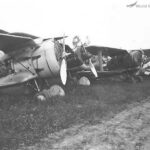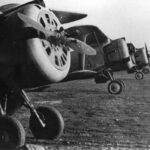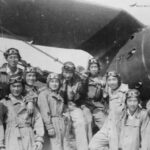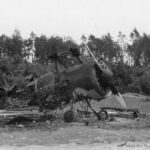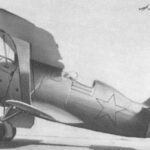Polikarpov I-153 P7250 China
Polikarpov I-153 P7250 China
Polikarpov I-153 P7250 China
Polikarpov I-153 P7250 China
Polikarpov I-153 China
Polikarpov I-153 Chaika
I-153 7
Polikarpov I-153 71 IAP
Polikarpov I-153 7
Polikarpov I-153
Pskov airfield 1941
I-153 undercarriage
I-153 wreck
I-153 with skis undercarriage
I-153 Minsk airfield 1941
I-153 Minsk 1941
I-153 Jagdflieger Vorschule 3
I-153 Jagdflieger Vorschule 3
German I-153 of the Jagdflieger Vorschule 3
I-153 IT-16
I-153 IT-16
I-153 IT-15 Finland
I-153 Finland
I-153 Finland
I-153 Finland
I-153 DM-4 ramjet
I-153 China
I-153 Chaika 14
I-153 9
I-153 6
I-153 65 ShAP
I-153
I-153 71 IAP
I-153 of the 71 IAP
Soviet pilot and I-153 65 ShAP
I-153
I-153 38 OIAE 1939
I-153 4
I-153 5
I-153 3
I-153 2706 in China
I-153 2706
I-153
I-153
I-153 21
Chaika from 148 IAP Liepāja 1941
I-153 148 IAP Liepāja 1941
Soviet pilot from 148 IAP Riga 1941
I-153 10
I-153 1
The I-153 “Chaika” was a modernization of the I-15 bis, where “bis” stands for the second and I-153, respectively, for the third variant of the I-15.
To increase speed, it was decided to install a more powerful engine, retractable landing gear, a new Clark-YH wing profile and an enclosed cockpit, the introduction of which was again postponed. The designer reverted to a seagull-type upper wing, like the one on the I-15, which was replaced by a conventional wing on the I-15 bis at the request of the Air Force. Created by Polikarpov’s design bureau in 1938. The oxygen apparatus was dismantled. The armament was completely modernized. The main difference – retractable wheels (or skis), allowing to reach a speed of 430 km/h. Armor was also introduced. In the second half of 1940, the conversion of previously produced I-153 fighters to attack aircraft (with the installation of RS-82 takeoff rails) began.
The first twenty I-153s took part in battles over the Khalkhin-Gol River in early July 1939. In the first clash, Japanese fighters made the mistake of mistaking the I-153 for the I-15 and suffering losses, but even then heavy losses were sustained and they could only be used in conjunction with the I-16. In the winter of 1939-1940, the I-153 was used during the Soviet-Finnish war, and eight Soviet I-153s of varying degrees of efficiency became Finnish trophies and were subsequently used by the Finnish Air Force. After the outbreak of the Great Patriotic War in 1941-1942, I-153s were used by the Finnish Air Force, including for aerial reconnaissance in the front zone. By the beginning of the Great Patriotic War, it had become obsolete and, due to its low speed, could not catch up with even the Ju 88 and , not to mention the Bf 109 fighters. However, at the beginning of the war it was used as a fighter, including in air defense during the defense of Moscow, and as a light attack aircraft.














